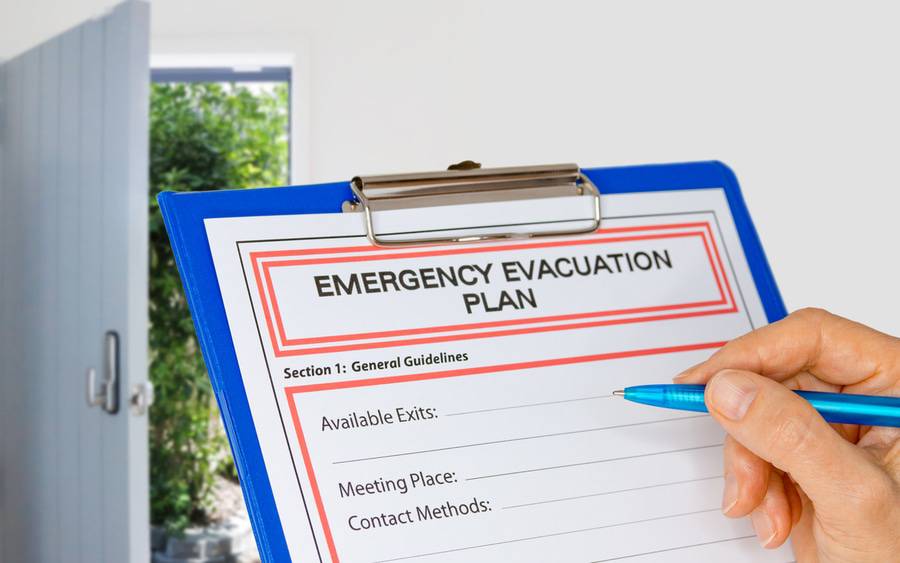How to Prepare for a Wildfire
What to do before, during and after a wildfire strikes

What to do before, during and after a wildfire strikes
Wildfires are a major hazard in places like San Diego County, especially to homes near canyons and in rural areas. Dry brush, hot weather during summer and fall, and seasonal Santa Ana winds are major risk factors.
To protect yourself and your family, it is wise to create and maintain a wildfire action plan and be ready to quickly evacuate if needed.
If personally affected by a wildfire, coming home can be difficult. Healthy ways to cope with the stress that can follow are recommended.
“While you may not be able to control the stressful situation itself, there are ways you can manage your reaction to that situation and minimize the physical and emotional effects,” says Jerry Gold, PhD, administrative director of behavioral health at Scripps.
To keep our patients and the community informed, Scripps has pulled the following safety tips and resources from reliable sources, including Cal Fire and the County of San Diego Office of Emergency Services, in the event of a wildfire.
How to prepare for a wildfire
Be prepared for a wildfire, especially if you live in a high-risk area, by:
- Creating and maintaining defensible space around your home (removing dead plants, grass and weeds that could catch fire) and hardening your home by using fire resistant materials
- Preparing for the possibility of evacuation by creating a Personalized Disaster Plan
- Explaining to everyone in the house, especially children, how to quickly evacuate in case of a fire
- Assembling an emergency supply kit that is easily accessible
What should I include in an emergency supply kit?
A basic emergency kit should include:
- One gallon of water per person per day for at least three days, for drinking and sanitation
- A minimum three-day supply of non-perishable food
- Working radio
- Flashlight
- First aid kit
- Extra batteries
- Whistle to signal for help
- Masks
- Plastic sheeting and duct tape to shelter in place
- Moist towelettes, garbage bags and plastic ties for personal sanitation
- Wrench or pliers to turn off utilities
- Manual can opener (for food)
- Local maps
- Cell phone with chargers and a backup battery
A two-week supply of prescription and non-prescription medications is also recommended.
Additional supplies may include:
- Important family documents, such as insurance policies, ID, bank account records
- Sleeping bag or warm blanket for each person
- Climate-appropriate clothing, including sturdy shoes
- Fire extinguisher
- Matches in a waterproof container
- Feminine supplies, personal hygiene items
- Mess kits, paper cups, plates, paper towels, plastic utensils
- Paper and pencil
- Books, games, puzzles or other activities for children
Find a safe place to evacuate
Identify a safe place to go in case of evacuation. Ask relatives or friends who live in a safe area if they can provide temporary shelter if needed. If that is not possible, be ready to make other arrangements, such as staying in a hotel or motel.
A wildfire action plan should also include:
- A meeting location outside the fire or hazard area in case your family is separated during evacuation
- Several different escape routes from your home and community
- An evacuation plan for pets and large animals, such as horses and other livestock
- An out-of-area friend or relative as a point of contact to act as a single source of communication among family members in case of separation
Pay attention to evacuation warnings, orders
Always know when it’s time to evacuate by staying informed. An evacuation warning from public safety officials is voluntary. An evacuation order is mandatory. Don’t wait for either to happen to evacuate if you feel unsafe.
Stay informed by:
- Registering your cell phone, VoIP (Voice over IP) or email with AlertSanDiego, the county’s regional notification system to receive warnings directly to your mobile phone
- Downloading the emergency app, SDEmergencyApp, to receive emergency information, including incident updates, shelter locations, evacuation areas and hazard perimeters
- Following local news coverage of fires in your region. The main Emergency Alert System radio stations for San Diego County are KOGO AM 600 and KLSD AM 1360
After a wildfire
Before returning home after a fire, check with officials to see if it’s safe. If so, continue to use caution. Disaster assistance programs are available to help.
Stay on top of your help and find healthy ways to cope with stress and anxiety.
“Initially, the stress reaction can be helpful, but only when you are escaping from a life-threatening situation,” says Dr. Gold. “It’s when the stressful events last longer than our ability to cope, such as during a disaster, that negative stress or ‘distress’ becomes the new norm, and physical and emotional reactions become damaging.”
Common reactions to the prolonged stress of disasters may include disbelief, shock, anxiety about the future, difficulty making decisions or concentrating, irritability and anger, difficult sleeping, changes in appetite, crying for no apparent reason, persistent fatigue and headaches.
“Some people may turn to increased alcohol or drug use because they don’t have the resources or support they need to cope,” Dr. Gold says.
The following coping tips may be helpful:
- Talking about your feelings with family, friends and neighbors
- Taking special care of yourself, resting, eating regularly, limiting caffeine, avoiding drugs and alcohol
- Limiting exposure to images of the disaster on TV and the web, once you know you and your family are out of danger
- Finding time for other activities, reading books, watching movies or engaging in other activities you enjoy
- Prioritizing your “to-do” list and take one thing at a time
- Asking for help if anxiety, depression or fears don’t go away
Make an appointment with a mental health professional that is skilled in helping people cope following a disaster situation.